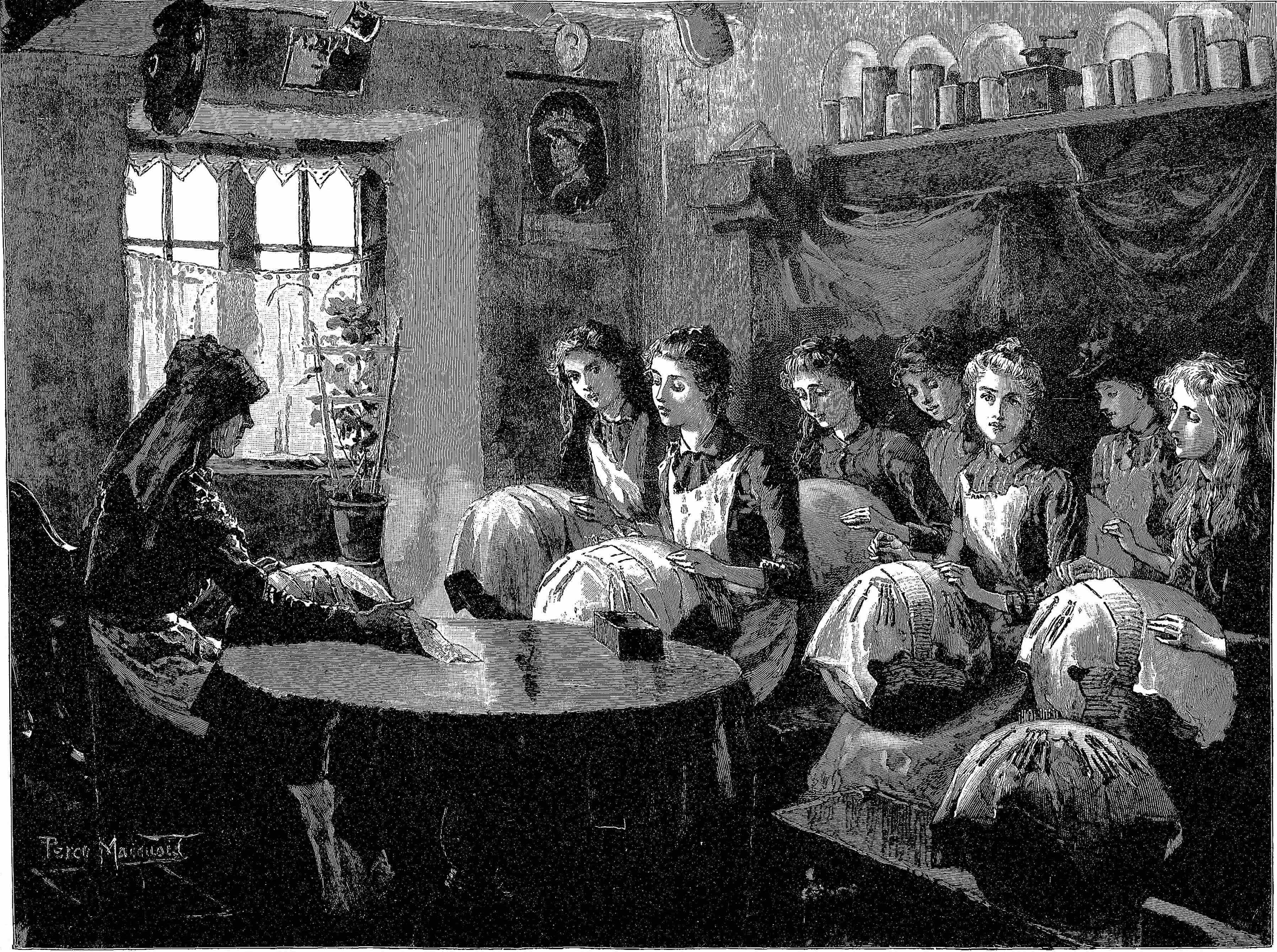Lace in Context
Bridging the Gaps Between Archives, Textiles, and Social History Collections
Lace in Context is a website which brings together lacemakers, researchers, and museums across Europe to develop new knowledge on the regional manufacture and trade in hand-made lace from the 18th to the 20th centuries. The website is run from Oxford University by an anthropologist, Nicolette Makovicky, and a historian, David Hopkin. The website aims to enhance the visibility of existing collections through building an interactive map and data-base of museums and sites where lace is made and displayed. We want to hear from scholars, lacemakers and the general public about their interactions with lace, their own experiences of the craft and their insights into its history. Lace as a high fashion item is well represented in public galleries, but historically lacemakers themselves have been relatively invisible: we want to correct that through our active blog.
While lacemaking is a European and even global tradition, it has mostly been studied on a country-by-country basis. On the Lace in Context website we are interested in uncovering the historical and cultural links between lace and lacemaking traditions across the continent and beyond. If one traces the history of the craft, it quickly becomes clear that the styles of lace we now identify as ‘English’, ‘French’, ‘Flemish’, or ‘Russian’ emerged from the courtly traditions and trade routes of Early Modern Europe, and spread throughout the continent where they became differentiated into local variants. These traditions shifted and changed with both domestic and international fashions, and grew organically with a rising demand for the textile amongst the nobility, professional gentleman, and trading classes. And everywhere these styles and techniques of lacemaking travelled, they became part of local practices and identities: lacemakers had their own patron saints, their own oral cultures, and their own traditions, which often bore many resemblances between regions and countries.
Taking a wider perspective on lacemaking also reveals how the fortunes of lacemakers rose and fell together with the religious schisms, economic policies, and changing political alliances between European states over time. Vital to the local economy of many regions across the continent, lace was a unique commercial product which connected wealthy consumers and patrons to a largely rural working class. Yet, very little is known about the lives of lacemakers themselves and about their experiences and worldview. Historical sources often tell us how much lace was made, of what kind, and how much it was sold for – but much less about what lacemakers thought of their work and of those who bought it. Indeed, popular artistic and literary depictions of lacemaking as a traditional craft lost to the industrial modernization of European society often reflect 19th century, romantic ideas about peasant culture, rather than the realities of life for the thousands of women who made their living this way throughout the centuries.
Lace in Context seeks to bridge the gaps which between various kinds of historical material – whether it be objects, texts, narratives, or oral history – in order to enhance our knowledge about the lives of lacemakers, lace designers, and lace traders across the European continent. It also aims to be an evolving site where practitioners, curators, and scholars of all kinds can meet and exchange information in an open and free format.
Editors:
Nicolette Makovicky is Lecturer in Russian and East European Studies at the University of Oxford. Here recent research has included studies of the morality of commerce and transmission of knowledge amongst lace makers in Slovakia and Poland, as well as contemporary concepts of authenticity and heritage in craft practice and discourse. Having previously written about the ideological appropriation of crafts into projects of Communist state-building, she has recently turned her attention to investigating how artisanal craft and folklore were implicated in the visual economies of the socialist state in Poland. For more on Dr Makovicky’s work see http://www.rees.ox.ac.uk/dr-nicolette-makovicky and www.oxford.academia.edu/NicoletteMakovicky
David Hopkin is Professor of European Social History at Hertford College, University of Oxford. He investigates the oral culture – the songs and tales – of people in the past such as soldiers, sailors, peasants and servants. From January 2016 he is starting a project funded by the Leverhulme Trust on ‘Lacemakers – Poverty, Religion and Gender in a Transnational Work Culture’. For more on this project and his other research see his pages on the Hertford College and Oxford History Faculty websites, or on Academia.edu.





